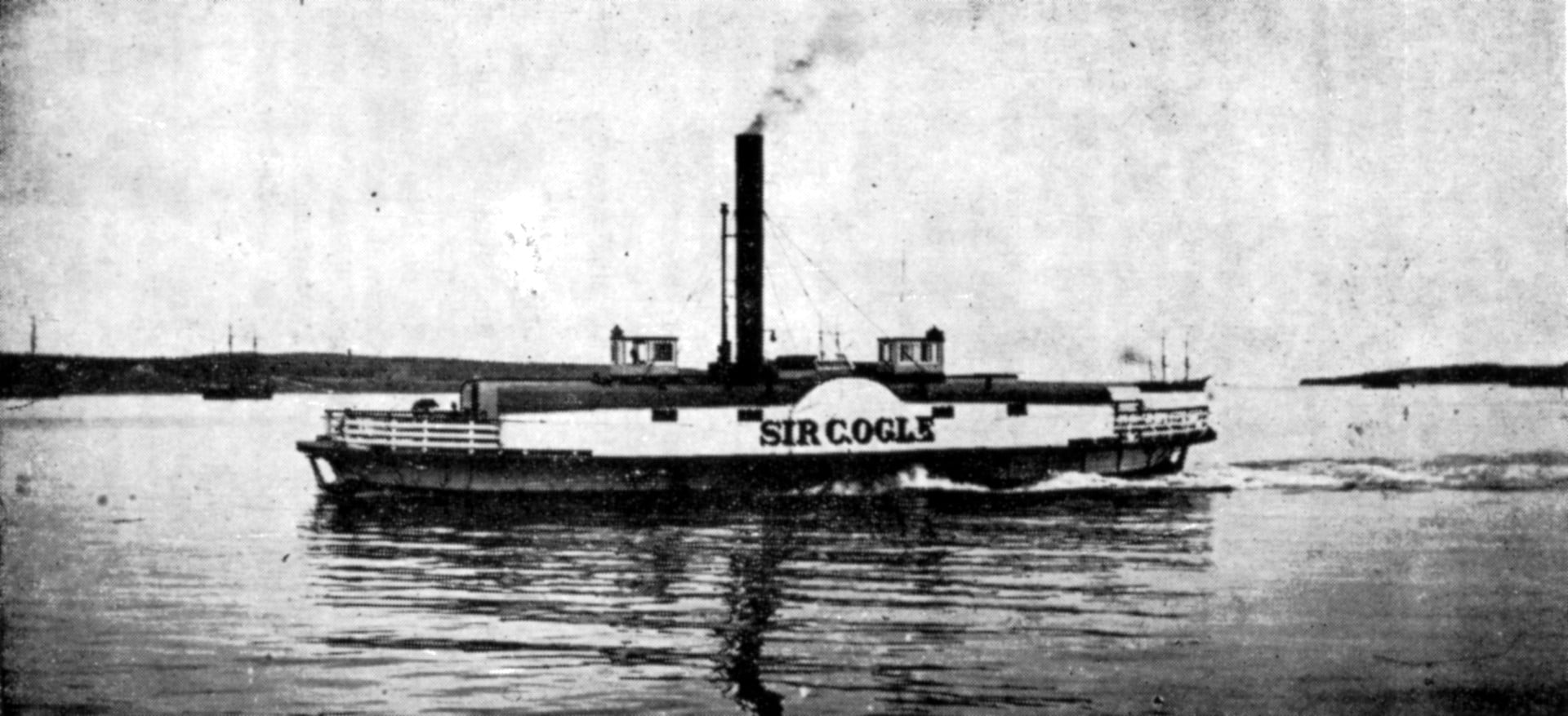From The Story of Dartmouth, by John P. Martin:
On January 29th, the fifth Sunday of the month in 1871, St. James’ Presbyterian Church was opened for the first services, and the new edifice was dedicated with appropriate ceremonies. On the next evening, the ladies of the congregation held their annual tea-meeting and salon in the basement hall where a large number of members and guests met in a “most successful housewarming,” according to the Presbyterian Witness.
At the capitulation of Paris towards the close of the Franco-Prussian War in February, William Garvie lectured on the beauties of that City to a crowded audience at the Mechanics’ Institute. George Webber 36, an oiler on the Steam Boat, was fatally injured when the Captain started the engine, unaware that Webber was inside the paddle-box chopping out the clogging chunks of ice. A large flag used to be hoisted at the end of the ferry wharf in Dartmouth to notify Haligonians there was good skating at the lakes.
That spring William Heffler commenced a north-end ferry service with row-boats running from Stairs’ wharf near the Brewery across the Narrows to Richmond. Fare five cents. Ebenezer Moseley completed a small steam-ferry for Cape Breton parties. Colonel George Dawson, now back in England, sold to John F. Stairs a large part of “Fairfield” property on the southern side of Dawson Street, where houses were to be erected for employees through a financial arrangement with the new Ropeworks. The remainder of Fairfield” estate which took in Pelzant Street and extended easterly towards Wyse Road was sold off in building lots from time to time. Gatherings at rural auction sales usually came a long distance; consequently it was the practice for the auctioneer to serve lunches on such occasions.
In the Provincial elections of 1871 the secret ballot was used for the first time. Instead of announcing candidates of his choice, the voter wrote the names on a paper, and deposited a sealed envelope into the ballot box. Again Dartmouth went Liberal. So did Preston.
The decennial census of 1871 gave the population of Dartmouth as 2,191. Weather records show we had 42 successive rainless days.
That summer there died Colonel William Chearnley (Charnley) retired military officer of Halifax, and native of Ireland, whose enthusiasm for fishing and hunting greatly popularized the countryside to the eastward of Dartmouth. He knew thoroughly the woods, streams and lakes of that district, and for years practised and promoted the protection of salmon streams and of wild life in general. It was Colonel Chearnley who once composed the lines on the large swinging signboard of the “Stag Hotel”, favorite hostel for sportsmen of last century, the ruins of which may still be seen at the northeast corner of No. 7 Highway and Frog Lake Road (now BRIAN STREET) in Preston, and locally known as Brooks’ Corner.
At the Aquatic Carnival, all the events including the four-oared scull race for the championship of the world, were rowed in August over a six-mile course from the Yacht Club at Richmond to stake boats moored off Fort Clarence. Sadler of England also won the world’s single scull championship over a straightaway course from Fort Clarence. The oarsmen must have passed quite close to Dartmouth shore, because the referee tugboat “Henry Hoover” fouled her propeller in a hawser off the Marine Slip. Hundreds of spectators crowded our wharves.
About this time the Octagon House or “Ink Bottle House” was completed for Gavin Holliday, Production Manager at The Starr Company. John Keating (father of Mrs. J. Howe Austen) was the Contractor, and Henry Elliot the Architect. There is a tradition that Mr. Holliday vied with his business associate John Forbes at “Lakeside”, in the erection of this modern mansion. The place contains 14 large rooms adjoining which are anterooms. Fixed washbasins were installed in the bedrooms, and stoves set up for heating. The walls of the house were double-plastered, and the whole building was surrounded with a two-tiered verandah. Earth from the rear of the property was hauled to the front to lay out the beautiful octagon-shaped terraces. According to G. C. Holliday, a son now living in Florida, the Octagon House cost over $25,000.
What has often been erroneously referred to as the “Saxby gale” occurred on the evening of October 12th when one of the worst hurricanes in history lashed the harbor into a foam, buffeted shipping against inundated wharves and strewed the shore with wrecks from Eastern Passage to Tufts’ Cove. The rain was torrential. Nearly every wharf and private boathouse suffered, but the greatest damage was at Symonds’ Foundry where the undermining of the stone wharf toppled the pattern shop with its contents, and most of the moulding shop into the harbor. The loss was $10,000.

